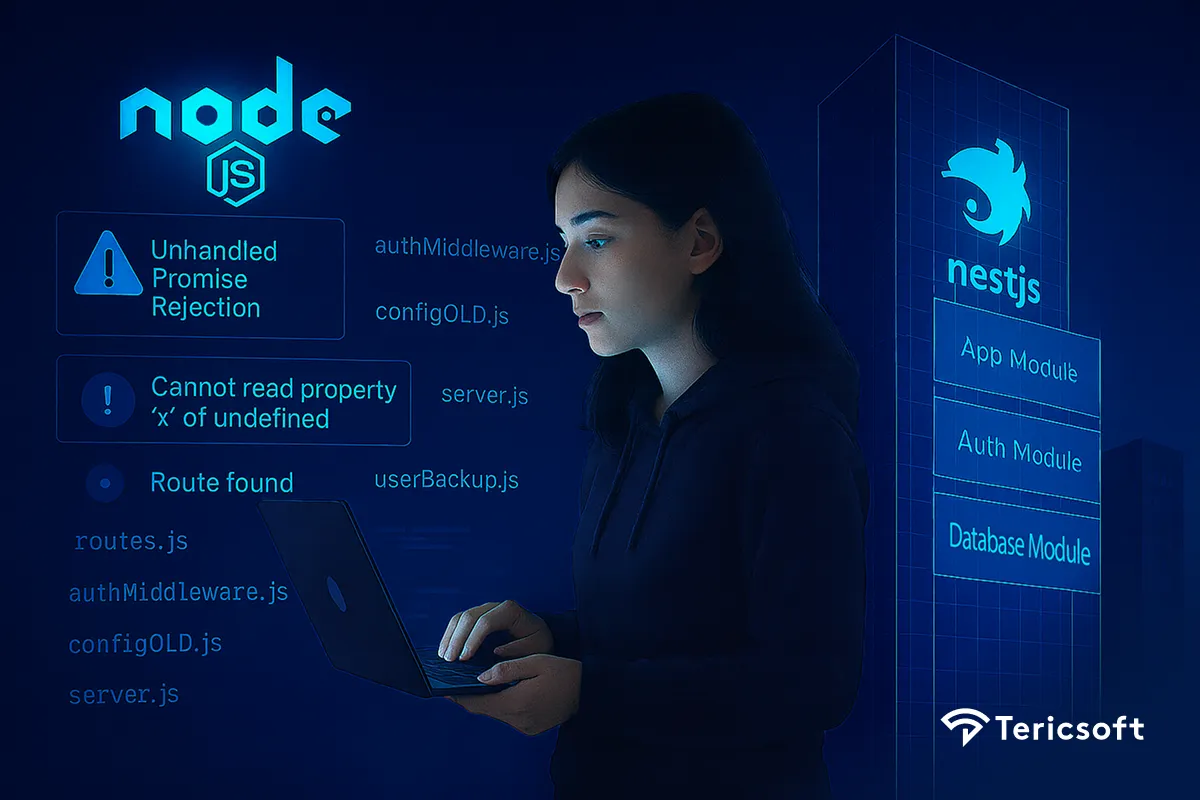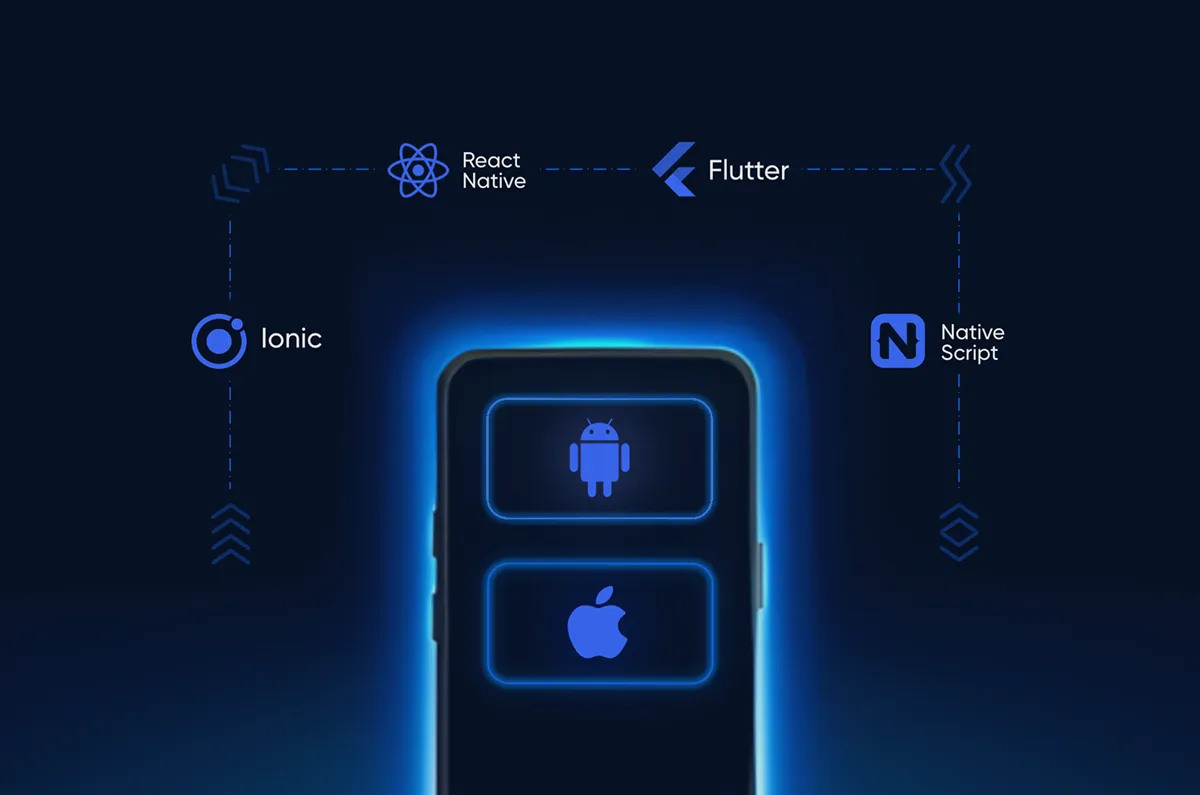
What is NestJS? Learn it's key features, architecture, and real-world use cases to help you decide if it’s the right framework for your next backend project.
Last year, I watched a client's Node.js API crumble under 10,000 concurrent users. Their Express.js codebase had grown into a tangled mess of middleware, routes scattered across dozens of files, and zero structure for testing. As their consultant, I witnessed the daily struggle: developers afraid to touch critical code, features taking weeks instead of days, and production bugs that could have been caught with proper architecture.
This experience taught me that choosing the right framework isn't just about code it's about team morale, business continuity, and long-term success.
A platform should be built to last, not patched to survive.
What Is NestJS? Understanding the Framework That's Changing Node.js Development
NestJS is a progressive Node.js framework that brings structure, scalability, and enterprise-grade architecture to backend development. Built with TypeScript and heavily inspired by Angular, it uses decorators, dependency injection, and modular architecture to create maintainable server-side applications.
Instead of asking "How do I organize this Express app?", developers get a clear blueprint where:
NestJS is essentially a structured way to build Node.js applications that scale from small APIs to enterprise-grade microservices.
Why NestJS? The Strategic Advantages That Drive Enterprise Adoption
Great frameworks feel invisible; poor ones fight you at every turn.
- Enterprise Readiness: Fortune 500 companies choose NestJS because it scales from prototype to production without architectural rewrites.
- Developer Productivity: Teams report 40-60% faster development cycles thanks to built-in tooling and clear conventions.
- Maintainability: The modular structure means new team members contribute meaningfully within days, not weeks.
- Testing Excellence: Built-in testing utilities and dependency injection make achieving 90%+ code coverage realistic.
- Type Safety: TypeScript integration prevents 70% of runtime errors before deployment.
- Scalability: Applications handle 10x traffic increases without architectural changes.
Research shows every hour invested in proper architecture saves 10 hours in maintenance and debugging costs.
How NestJS Works: Architecture Flow and Request Lifecycle
NestJS orchestrates backend services through a hierarchical structure that flows from modules to controllers to services. Think of it as a well-organized office building where each floor (module) has specific departments (controllers) staffed by specialists (services).
Core Architecture Flow:

Request Lifecycle Flow:

Module Dependency Flow
Digital teams leverage NestJS through three primary development patterns:
- Modular Architecture: Each feature lives in its own module with clear boundaries and dependencies.
- Dependency Injection: Services are injected where needed, making testing and maintenance effortless.
- Decorator-Driven Development: Metadata decorators handle routing, validation, and cross-cutting concerns automatically.
When architecture decisions are made by the framework, teams ship features faster and spend less time debugging integration issues.

When to Choose NestJS: Project Signals and Decision Framework
Think of NestJS as professional construction tools: essential for building skyscrapers, overkill for a garden shed. Consider NestJS when you encounter these signals:
- Team Size: 3+ developers working on the same codebase
- Application Complexity: Multiple modules, authentication, real-time features
- Long-term Maintenance: Products expected to evolve over years
- Enterprise Requirements: Compliance, security, and scalability needs
- TypeScript Preference: Teams already committed to type safety
- Testing Culture: Organizations that prioritize code quality and test coverage
- Microservices Architecture: Building distributed systems with multiple services
- GraphQL Integration: Complex API requirements beyond REST
- Real-time Features: WebSocket, Server-Sent Events, or message queues
If multiple factors apply, NestJS transforms from nice-to-have to essential infrastructure.
NestJS Drawbacks: Honest Limitations and Trade-offs
Even excellent tools have limitations. NestJS brings complexity that smaller projects might not need:
- Learning Curve: Developers new to decorators and dependency injection need 2-3 weeks to feel productive.
- Overhead for Simple APIs: A basic CRUD API might feel over-engineered compared to Express.js.
- Bundle Size: The framework adds weight that serverless functions might not justify.
- Angular-Heavy Patterns: Teams unfamiliar with Angular concepts face steeper onboarding.
- Performance Considerations: The abstraction layers can introduce latency in high-frequency trading or real-time gaming scenarios.
- Opinionated Structure: Less flexibility for teams that prefer complete architectural freedom.
- Memory Usage: Higher baseline memory consumption due to framework overhead.
If your project is a simple webhook handler or a proof-of-concept API, vanilla Express.js might serve you better.
Real-World Uses of NestJS: From Startups to Fortune 500
NestJS shines in specific scenarios where structure and scalability matter most:
Enterprise Applications
- Banking Systems: Transaction processing, account management, compliance reporting
- E-commerce Platforms: Order management, inventory tracking, payment processing
- Healthcare Systems: Patient records, appointment scheduling, medical device integration
API-First Products
- SaaS Platforms: Multi-tenant applications with complex business logic
- Mobile Backends: Supporting iOS/Android apps with real-time features
- Third-party Integrations: Building APIs that connect multiple external services
Microservices Architecture
- Distributed Systems: Breaking monoliths into manageable services
- Event-Driven Architecture: Message queues, event sourcing, CQRS patterns
- Service Mesh: Complex inter-service communication patterns
Real-time Applications
- Chat Applications: WebSocket connections, message routing, presence detection
- Gaming Backends: Player matching, leaderboards, real-time updates IoT
- Platforms: Device communication, data streaming, analytics
Data-Heavy Applications
- Analytics Dashboards: Complex data aggregation and visualization
- Reporting Systems: Scheduled reports, data transformation, export functionality Machine
- Learning APIs: Model serving, data preprocessing, batch processing
From framework to revenue impact, NestJS improvements deliver measurable business outcomes:
- Development Speed: Teams report 50% faster feature delivery after mastering the framework.
- Bug Reduction: TypeScript and dependency injection prevent runtime errors before deployment.
- Team Onboarding: New developers contribute productively 60%faster with clear structure.
- Maintenance Costs: Well-architected NestJS applications require 40% less debugging time.
These metrics prove that choosing the right framework is one of the highest-ROI decisions a development team can make.









